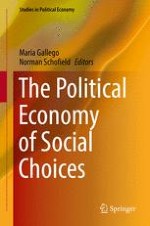2016 | OriginalPaper | Buchkapitel
Comparison of Voting Procedures Using Models of Electoral Competition with Endogenous Candidacy
verfasst von : Damien Bol, Arnaud Dellis, Mandar Oak
Erschienen in: The Political Economy of Social Choices
Aktivieren Sie unsere intelligente Suche, um passende Fachinhalte oder Patente zu finden.
Wählen Sie Textabschnitte aus um mit Künstlicher Intelligenz passenden Patente zu finden. powered by
Markieren Sie Textabschnitte, um KI-gestützt weitere passende Inhalte zu finden. powered by
